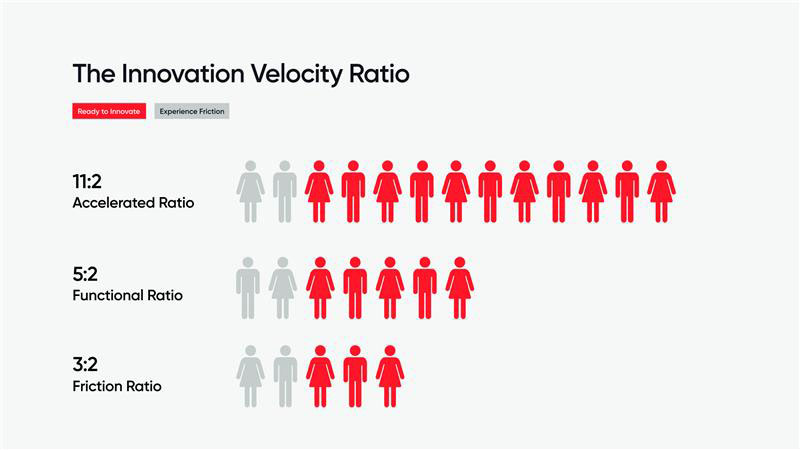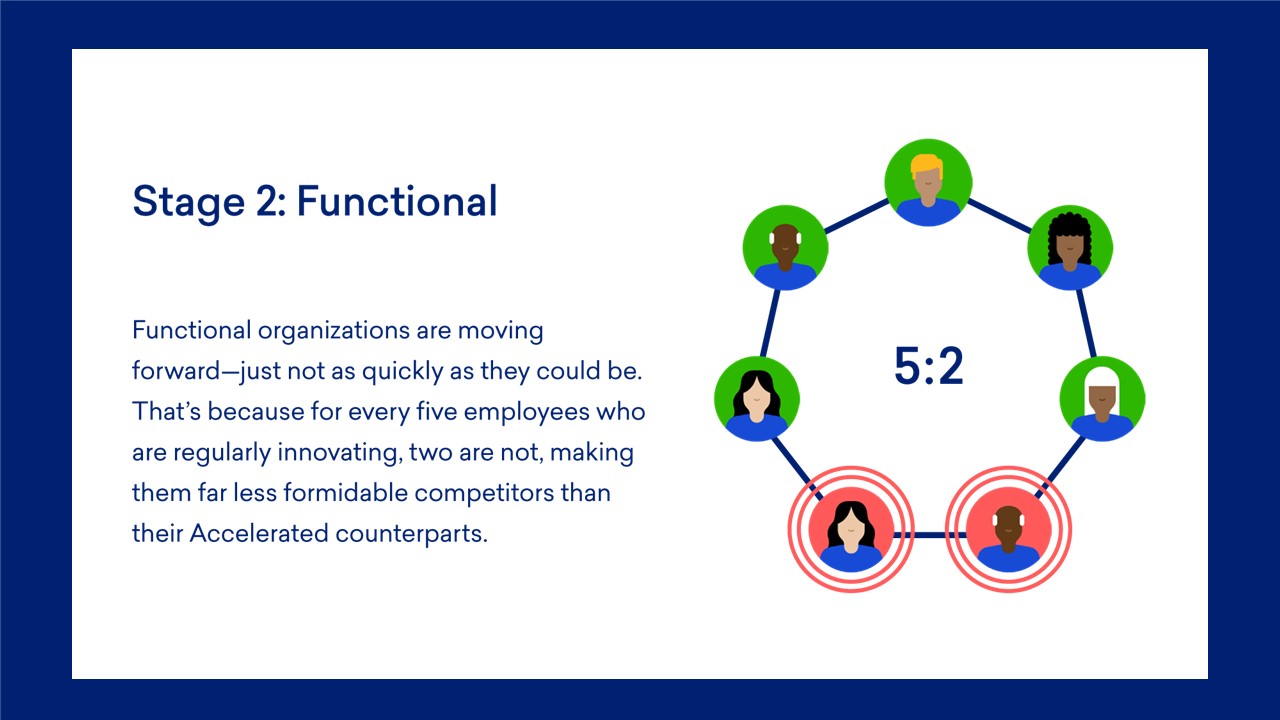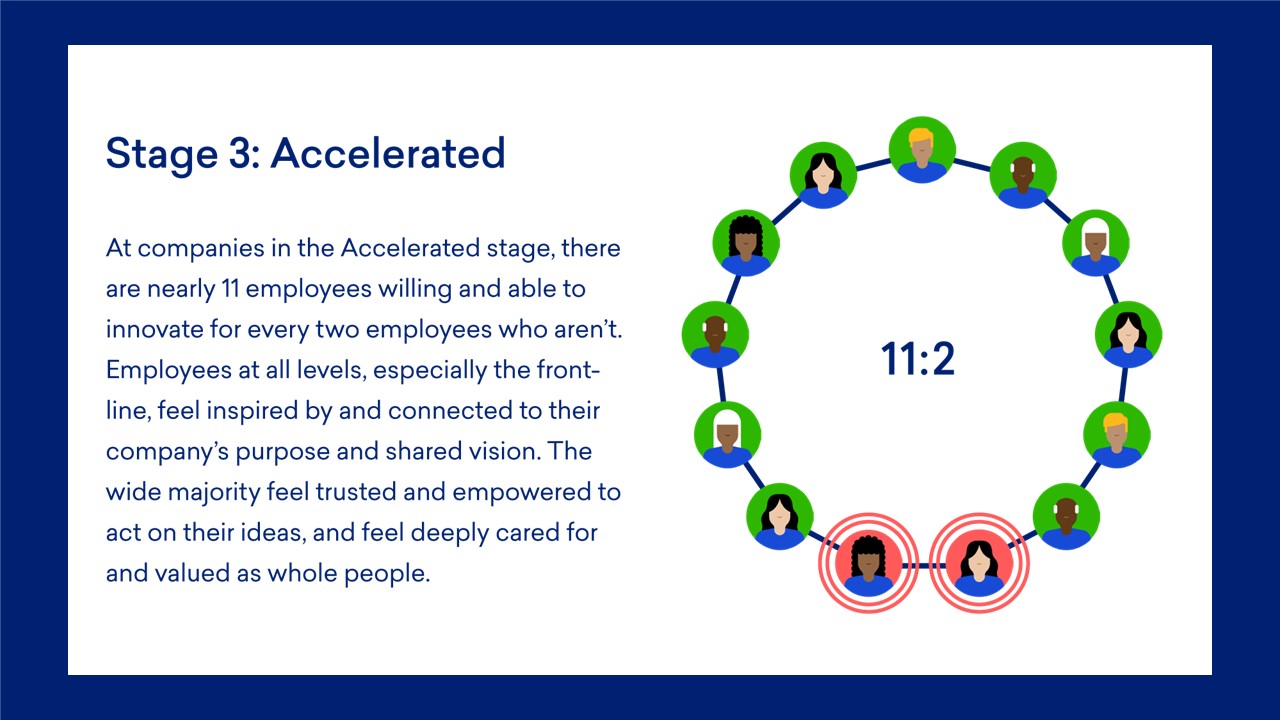Benchmarks & Trends, Employee Experience, Innovation
We dug into our research data to understand how companies like Nvidia and Quicken Loans ignite all employees to give their best work, share ideas for new business, and stay ready for change. Leveraging data from half a million employee surveys across approximately 800 different companies, we dove into the underlying drivers of why employees actively and frequently innovate within their companies, versus those who feel unable.
Our research identified top companies that have figured it out—as well as many other companies that haven’t. In fact, companies fell into one of three key levels of success, which we have coined the Innovation By All Model. This model captures how capable an organization is at harnessing the full creative potential of its people and the corresponding costs to the business when this potential is not realized.
The three levels of the Innovation By All Model— “Friction,” “Functional,” and “Accelerated”—describe an organization’s ability to quickly harness, mobilize and respond to new information and ideas. This can be information from the outside environment, such as competition and market changes, or from the inside, in the form of new strategies, ideas or insights.
In all cases, a company’s ability to innovate, adapt and pivot quickly is essential to its survival, and these stages offer a way of conceptualizing a company’s capacity for success. Companies in the Accelerated state share an ability to rapidly adapt to disruptions, quickly create new and better ways of doing things, and generate high-quality ideas. Employees across the business can be counted on to bring their best ideas and effort in the service of the company’s best interests.
In contrast, companies in the Functional state find mixed success in innovation. Disruptions might be spotted but generate no reaction, great ideas get offered yet left unimplemented, and rolling out changes takes longer than what the company can afford.
When companies experience a state of Friction, leaders and employees experience organizational inertia when rolling out decisions, trying out new approaches, or responding to market changes. While these companies may still find success, they have unrealized potential and can struggle to adapt or innovate. How does a company know its current capacity? Our research identified a core gauge to determine an organization’s innovation state: the Innovation Velocity Ratio.This simple measure of an organization’s innovation capacity is determined by how many employees consistently experience meaningful opportunities to innovate versus those who find these opportunities lacking, absent, or even threatening.
This ratio has a clear impact on an organization’s innovation capacity. As a leader, imagine trying to quickly mobilize your organization to respond to the competitive landscape. If your organization were a boat racing across the water, the employees who are not ready to innovate represent drag that keeps you from maneuvering quickly or speeding ahead. However, as those employees shift from the red side to the green, they accelerate the change. They give you the power to pivot and race ahead every time.
For the full story, download Innovation by All.











